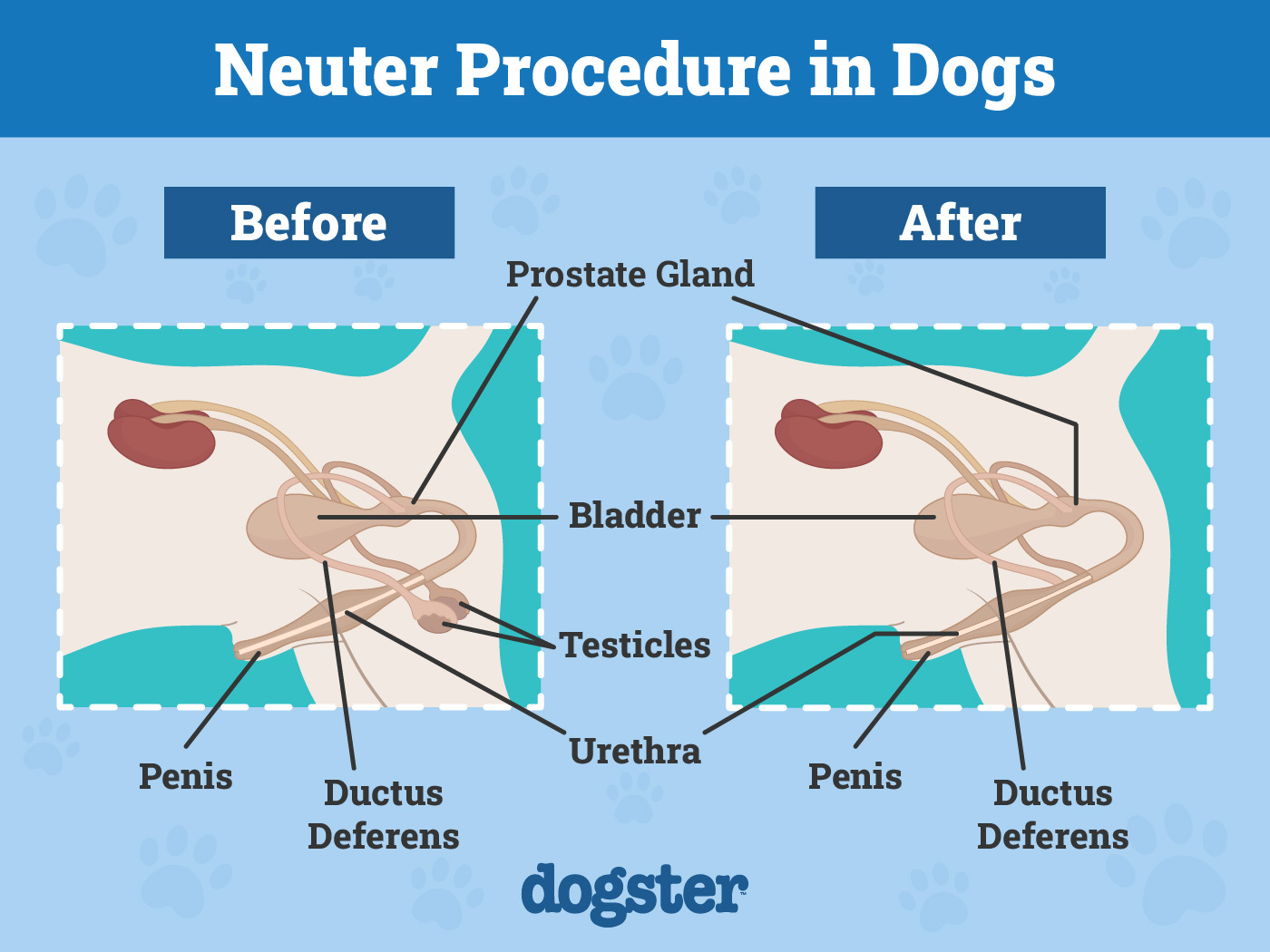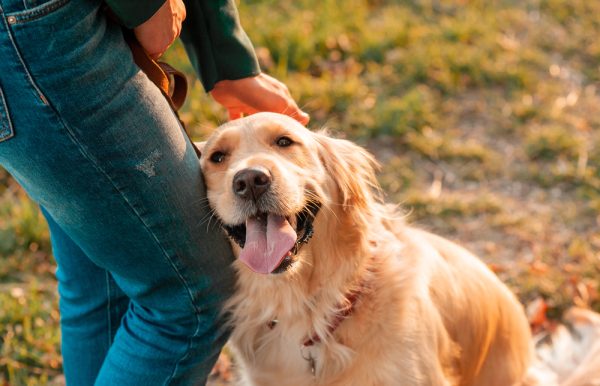In this article
As pet owners, we like to know as much as we can about our companions to help keep them safe and happy, so they can stay with us for a long time. However, when it comes to their genitals, many owners prefer to respect their pets’ privacy, but this can lead to confusion about certain issues.
One question that many owners have is: Do vets remove the testicles when neutering a dog? The answer is yes, the testicles are indeed removed when a male dog is neutered. Keep reading as we explain what neutering is and why some neutered dogs look different than others after the procedure.

What Is Neutering?
Neutering of male dogs is another term for castration, which is the surgical procedure that removes the male dog’s testicles. Since the testicles are usually on the outside of the body, neutering is less invasive than spaying a female dog, whose sex organs are internal. However, in rare cases, one or both of the testicles haven’t dropped into the scrotum, requiring a more complex operation. The medical term for this is cryptorchidism.
Castration is performed with the dog under general anesthesia. Most commonly, an incision is made just in front of the scrotum, and both testicles are removed through this one incision. The incision is closed with skin sutures or dissolvable sutures just under the skin (which don’t need to be removed). The scrotum is usually left in place and will shrink a few months after the surgery.

Why Do Some Neutered Dogs Appear to Have Testicles?
Since the scrotum is usually left when a dog is neutered, it can sometimes become swollen after the operation, giving the appearance that testicles are still present. This is usually more obvious when dogs are castrated at an older age, as the scrotal sac has more time to develop. Over time, the empty scrotum will flatten out, though it may remain as an empty flap of skin in older dogs.
If the scrotum is obviously swollen in the postoperative period, contact a vet for advice. To minimize discomfort and swelling after castration, follow all your vet’s post-op care instructions. This will involve having your dog rest, giving him prescribed pain relief medications, and preventing him from licking the surgical site, usually by using an Elizabethan collar.
Neuticles
One reason a dog might look like he has testicles after neutering surgery is that he has Neuticles, which are essentially prosthetic testicular implants. The Neuticles company started in 1995 and has sold over 500,000 pairs of prosthetic testicles. There are 12 sizes, so a pair is available for any size of dog. However, they are quite expensive, and many veterinarians do not believe the insertion of Neuticles is justified, as it is a cosmetic procedure with no benefit to the animal.

What Age Should I Neuter My Dog?
Traditionally, dogs have been routinely castrated at around 6 months of age. However, recent research suggests that the timing should vary based on your dog’s size, breed, and behaviors. A study published in Frontiers in Veterinary Science provides guidelines for the age of neutering for different breeds, relating to the risks of a dog acquiring joint disorders or cancers.
It’s always advisable to discuss the timing of the surgery with your vet, who will be able to guide you with the latest research and information related to your pup. For example, if your dog is a large breed, your vet may recommend neutering him a bit later. In Labradors, Golden Retrievers, and German Shepherds, there is an increased incidence of joint disorders if male dogs are neutered in their first year.
Interesting Facts About Dog Neutering
- Neutering your male dog prevents testicular cancer and reduces the risk of certain prostate problems.
- The life expectancy of a neutered male dog is 8% longer than a non-neutered male dog, essentially adding over a year to the animal’s life on average.
- Neutering can reduce roaming, as it reduces a dog’s urge to seek out a female to mate with.
- Many counties and states have programs that can help make spaying and neutering animals more affordable.

FAQ
What Are the Benefits of Neutering a Dog?
Neutering male dogs can prevent accidental matings and unwanted litters of puppies. It prevents testicular cancer, lowers the risk of some prostate problems, and can reduce humping and roaming behaviors.
Are There Any Risks Associated With Neutering?
As with any surgical procedure, neutering carries a few risks, such as complications from anesthesia or infection. However, the risk of these complications is very low.
How Do I Prepare My Dog for Neutering?
The vet will provide specific instructions, which usually include fasting the dog overnight before surgery.

What Is the Recovery Process Like?
Recovery typically involves 1 to 2 weeks of restricted activity to allow the incision to heal. The vet will provide pain management and care instructions, and you’ll need to keep the dog from licking or biting the surgery site, which may require the use of an Elizabethan collar (a.k.a. e-collar or “cone of shame”).
Will Neutering Change My Dog’s Personality?
Neutering can influence a dog’s mood and make certain behaviors more or less likely, but it doesn’t fundamentally change a dog’s personality. If you are considering castrating your dog for behavioral reasons, speak to the vet or a qualified animal behaviorist for advice first.
If you need to speak with a vet but can't get to one, head over to PangoVet. It's our online service where you can talk to a vet online and get the advice you need for your pet — all at an affordable price!

How Much Does Neutering Cost?
The cost of neutering your pet can vary dramatically depending on your location, the veterinary clinic, and the size of the dog. Some animal shelters and clinics offer low-cost neutering services, and there may be other discounts available, but we recommend budgeting $75–$500 to be safe.

Summary
When your male dog undergoes the process of neutering, the vet will remove his testicles. Neutering is done to reduce the risk of certain cancers, especially testicular cancer, later in the dog’s life. It can also lessen aggression and roaming behaviors in some dogs and prevent unwanted pregnancies, which helps reduce the number of pets without a home.
Many people get confused about whether a neutered dog still has his testicles because some neutered dogs have better-developed scrotums, which may swell in the period immediately after castration, giving the appearance that the testicles remain. Some pet owners may even be trying out a pair of Neuticles on their pets to help them appear intact.
You might also want to check out:
- Fake Testicles for Dogs: Vet-Verified Facts & FAQ
- Zeuterin for Dogs: Is it a Better Choice Than Neutering? Important Facts
Featured Image Credit: Nukky Starlet, Shutterstock


















